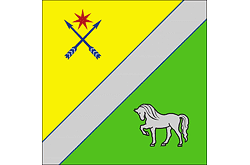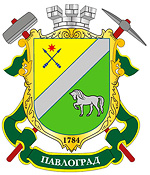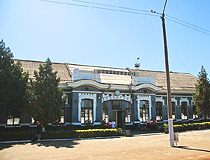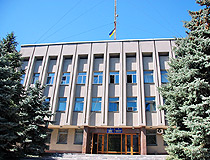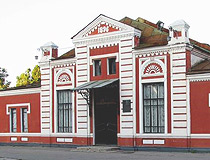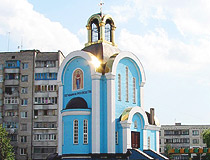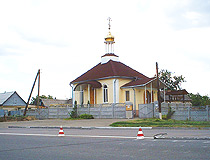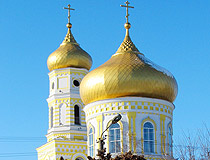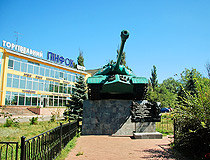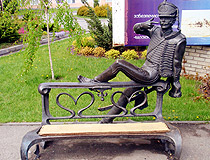Pavlohrad - Overview
Pavlohrad is a city located in the east of Dnipropetrovsk Oblast of Ukraine. The center of the West Donbass coal basin, it has a favorable geographical position on the highway Kyiv - Luhansk - Izvarino, between the cities of Dnipro and Donetsk. The City Day of Pavlohrad is celebrated on September 18.
The population of Pavlohrad is about 101,000 (2021), the area - 59 sq. km.
The phone code - +380 5632, the postal codes - 51400-51429.
History of Pavlohrad
Around 1660, the central governing body (the Kish) of the Zaporizhzhya Sich, organized transportation across the Vovcha River in the territory of present Pavlograd. The first settlers in this area were the Zaporozhian Cossacks, who were engaged in cattle breeding and agriculture.
After the raids of the Crimean Tatars in 1768-1769, this area was abandoned. At the beginning of 1770, a retired Cossack, military foreman Matvey Khizhnyak built his winter house here, which was the beginning of a new settlement. Khizhnyak made the initial plan of the settlement with places for a church, school, hospital, streets, personal houses and invited people to settle here.
After the liquidation of the Zaporizhzhya Sich, it became the settlement of Matveyevka of the Azov province. In December 1779, Matveyevka was renamed the village of Luganskaya. In 1784, by the decree of Catherine II, it was renamed again and became the county town of Pavlograd (literally “the town of Paul”) in honor of Paul I, the heir to the Russian throne. By the end of the 18th century, the population of the town was about 2,400 inhabitants.
More Historical Facts…
The town plan of Pavlograd was made by William Hastie, a Russian architect of Scottish descent, and approved by Emperor Nicholas I in 1831. The heyday of the local economy came in the 19th century. Each year, three-four fairs were held in Pavlograd, which attracted merchants from St. Petersburg, Moscow, Tula, Orel, Kursk, and Warsaw. They traded mainly cattle, horses, and sheep.
At the end of the 19th century, Pavlograd became a major center for trade in grain and flour. Pavlograd bread was exported to the cities of the Russian Empire, as well as to London and Constantinople. The development of trade led to the founding of a town bank, the creation of a joint-stock company of the flour-grinding and cereal industry.
In the 1870s, a railway was built between St. Petersburg and Simferopol, which passed through Pavlograd. In 1897, 15,775 people lived here (Russians - 5,421, Ukrainians - 5,273, Jews - 4,353, Poles - 312, Tatars - 185). In 1912, the city hall (present “Ukrposhta” building) and the railway station were constructed.
In 1931, an artillery range began to operate in Pavlograd, which before the Second World War became the main artillery range of the USSR. The city had two defense industry factories. From October 11, 1941 to September 18, 1943, Pavlograd was occupied by German and Italian troops. A significant part of the city was destroyed during the fighting.
In the 1950s, construction of 11 mines began. Thanks to the large explored coal reserves, the city was considered the center the Western Donbass. Engineering and construction industries also developed during the post-war decades.
In the 1960s-1980s, Pavlograd became a strategic object of the USSR because intercontinental ballistic missiles (ICBMs) and their components, mainly engines, were manufactured at the defense plants of the city.
Architecture of Pavlohrad
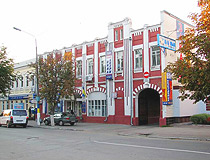
Old building in Pavlohrad
Author: Dmitriy Uranus
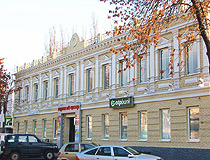
Shopping center in Pavlohrad
Author: Dmitriy Uranus
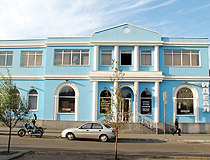
On the street in Pavlohrad
Author: Dmitriy Uranus
Sights of Pavlohrad
The city has 27 architectural monuments, mainly houses in the Art Nouveau style.
Cathedral of the Holy Savior (1892-1898) - the main Orthodox church of Pavlohrad. In Soviet times, this church was the only one not destroyed, but it was badly damaged during the Second World War. In 1960, the cathedral was closed and the building was used as a gym. In 1991, it was returned to believers and restored. Holubytskoho Lane.
Pavlohrad Museum of History and Local Lore. The museum is located in the city center, near the Cathedral of the Holy Savior. The exposition tells about the history of Pavlohrad including the famous 135th hussar regiment, which distinguished itself in the Franco-Russian War of 1812. There is an interesting ethnographic collection and an exposition devoted to the Cossacks. One of the most interesting exhibits is the well-preserved Cossack boat of the 15th century. Muzeinyi Lane, 2. Opening hours: 09:00-17:00. Day off: Monday.
The Count’s Theater (1896). The Pavlohrad Drama Theater named after Boris Zakhava was founded in 1974. It is housed in the old building of the Count’s Theater. The theater bears the name of Boris Zakhava - a theatre director, actor, and acting coach born in Pavlohrad. Kharkivska Street, 65.
The Monument to Lieutenant Rzhevsky. This monument to the literary and folklore hero Lieutenant Rzhevsky was installed at the central entrance of the Pavlohrad Chemical Plant in 2006.
The character of this reckless hussar became popular in the USSR after the comedy by Eldar Ryazanov “The Hussar Ballad” (1962). The Belarusian sculptor V. Zhbanov portrayed Lieutenant Rzhevsky casually sitting on the back of a bench and twisting his mustache. Zavodska Street, 44.
Holy Assumption Church (1896) - a stone church built on the donations of local residents near the cemetery. In the 1930s, the church was closed and converted into a granary. It was opened again in 1943. Kharkivska Street, 19.
At the crossroads of Tsentralna and Dniprovska streets there is an IS-3 heavy tank - a monument to its creator Joseph Kotin, a native of Pavlohrad. There is also a monument to Matvey Khizhnyak, the founder of Pavlo?rad, on Tsentralna Street. Installed in 2009, it became a gift for the 225th anniversary of the city.
Mavrynskyi Maidan - a mysterious earthen structure resembling a giant crab located on the left bank of the Vovcha River, very close to Pavlohrad in the north-west, near the village of Mezhyrich.
Perhaps this is an ancient observatory, or a defensive structure, or a saltworks, there is no consensus among researchers. In the days of the solstice, a lot of tourists come here. If you get to it on foot or by bicycle from Pavlohrad, your path will lie through a nice suspension bridge.


